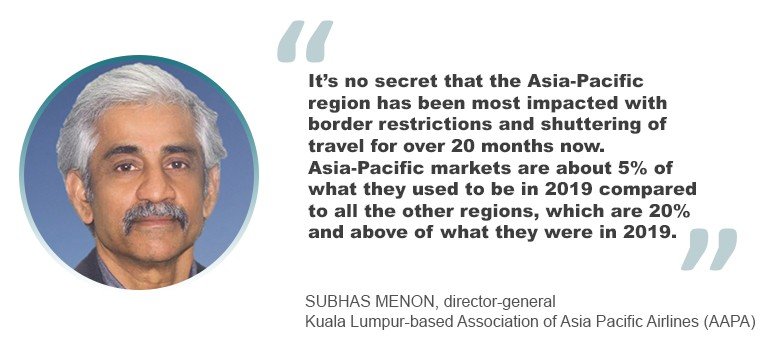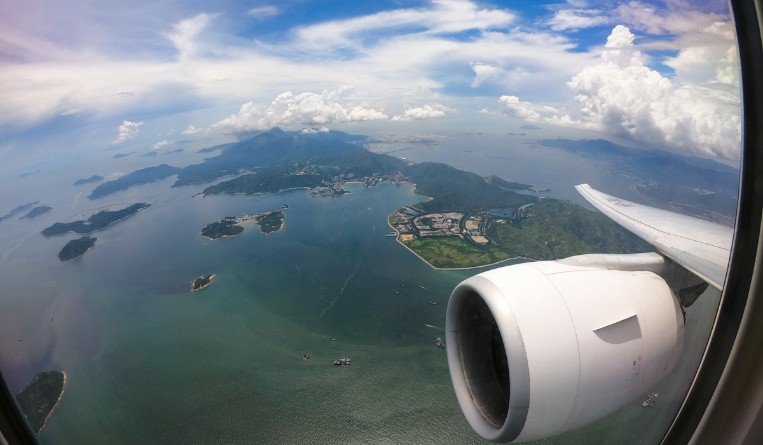Air cargo continues to be the “only silver lining” of the aviation industry in Asia Pacific as recovery in passenger demand is taking a more sluggish turn hampered by mixed policies and slow vaccination rates in the region.
Subhas Menon, director-general of the Kuala Lumpur-based Association of Asia Pacific Airlines (AAPA) said the recovery path of the aviation sector in Asia Pacific continues to lag behind that seen in other regions.
“It’s no secret that the Asia-Pacific region has been most impacted with border restrictions and shuttering of travel for over 20 months now,” the AAPA chief said in the latest CAPA Live event. “Asia-Pacific markets are about 5% of what they used to be in 2019 compared to all the other regions, which are 20% and above of what they used to be in 2019.”
He noted that in the case of the United States and Europe, the sector is already reaching 40% of what it used to be.
“All this boils down to, basically, vaccination,” Menon said, explaining that as other regions like the U.S., Canada, Europe and the Middle East start adopting a “more risk-assessed strategy,” Asia Pacific remains stuck with its zero Covid-19 strategy, making it difficult to shore up demand.
“With their vaccination levels above 60% in most of these markets, they are beginning to lift domestic restrictions, as well as on air travel. Whereas in the Asia-Pacific region, this is not happening,” Menon continued.
The AAPA chief also noted that the lack of a uniform policy in the region that could hasten the lifting of restrictions is also further dragging the aviation industry in Asia Pacific.
“I think the biggest impediment is the divergence in policy,” Menon said. ‘[There’s] divergence in strategies, there’s also divergence in practice. So many places are struggling,” he added, pointing out that policies should be geared towards “trying to live with the virus.”
Menon said the industry expects it to be “maybe the end of 2022, or even the middle of 2023 before the whole of Asia-Pacific achieves the adequate level of double-dose vaccination.”
Menon said air cargo remains to be the single bright spot for the region’s airlines with strong external demand boosting cargo revenue, although he noted that this “remains largely insufficient” in mitigating the drastic fall in passenger volumes.
Latest data from AAPA showed preliminary traffic figures for cargo demand continuing its “solid growth path” with Asia Pacific airlines recording a 26.0% increase in August.
Menon said then that air cargo volumes continued to expand driven by strong demand as shippers turned to air freight amid ongoing disruptions at major ports.
Meanwhile, international passengers in the whole Asia-Pacific region during the period totaled only 1.4 million, representing just 4.0% of the 34 million that flew in the corresponding month of 2019 before the Covid-19 pandemic.
For that month, AAPA said despite the supportive demand conditions for the month, limited belly hold space resulting from the low number of flights continued to constrain freight capacity, which saw a comparatively slower 17.8% year-on-year increase.
Nonetheless, Menon said that air cargo volumes continued to expand driven mainly by strong demand as shippers turned to air freight amid ongoing disruptions and supply chain congestion in major exporting ports such as China.
“The only silver lining in the cloud is cargo, which is really going great guns, despite the lack of capacity. All in all, I think Asian airlines are really in a pretty bad state,” Menon said in the CAPA Live September event.




